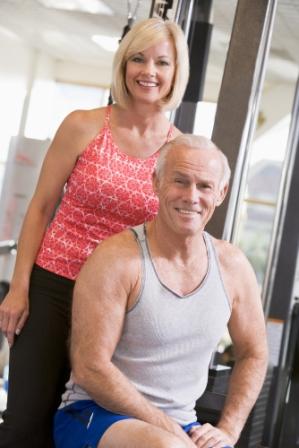|
|
||||||||||||||
|
Exercise Heat Shock Proteins chemotherapy |
||||||||||||||
| Contents and links: Benefits of exercise | Tips to increase your daily exercise | Search for local facilities | Specific exercises after breast cancer | Abdominal surgery | Pelvic floor exercises | For shoulders and neck | On radiotherapy | On chemotherapy | On aromatase hormones | Underlying mechanisms | Lifestyle & exercise | | ||||||||||||||
We know already from many excellent studies that exercise during and after chemotherapy is healthy, it reduces the risks of: Furthermore, regular vigorous exercise has direct anticancer properties by stimulating the body to produce anti-cancer chemicals including IGF-1. There, therefore, has to be very good reasons to advise patients not to exercise. The recent study from Ohio reported that adding a chemical called heat shock protein (HSP) to cancer cells growing in a petri dish increase their resistance to chemotherapy by allowing he cells to heal themselves more efficiently. The author and many newspapers went on to suggest that exercise before chemotherapy should be avoided. Although an interesting academic experiment, this was based on the assumption that HSP can increase in humans after exercise. Here are the reasons why this advice cannot be supported. About
Heat Shock Proteins (Heat shock factor-1) People who exercise regularly tend to have
higher baseline HSP levels, and is one of the explanations why they tend to look younger.
There is some clinical evidence that vigorous exercise can increase levels HSP
especially if associated with a lack of oxygen, although not all experiments
agree with how much it would rise and what level of exercise is required. For example, a study from Toronto measured HSP in muscle in
mice while they were exercising, They found that there was no increase in levels
when mice where exercising normally on a wheel. Only those exercising anaerobically (sprinting) and simultaneously
heated to 40 degrees had any increase in their HSP – condition which would be
hard to emulate in humans. Test in humans also show that regular exercisers do
not tend to have a sudden rise rise in HSP when then exercise more vigorously
but blood levels can rise if strenuous exercise is taken in a previously
sedentary individual. Either way there is little information on whether
increased blood and tissue levels of HSP would actually increase levels within
cancer masses in humans. The experiment involving breast cancer cells from Ohio, showed that adding HSP to the cancer cells in the petri dish made them more resistant to chemotherapy. Following this there was a media frenzy warning that exercise could diminish the killing effect of chemotherapy. They made no comment on the fact that, if indeed HSP were increased in the body, it also would also diminish the harmful side effect, including heart damage. And, although this has not been proven, I suspect the benefit in terms tissue protection would out way the tumour sparing effect - thus actually increasing the therapeutic ratio of chemotherapy. Certainly a therapeutic procedure called hyperthermia (used with chemotherapy and radiotherapy) suggests that heating the tissue actually kills more cancer cells without killing the normal cells. In summary: There is no evidence, at all, that in humans exercise diminishes the chemotherapy effect. There are several benefits of exercising during chemotherapy. In view of the new Ohio experimental data more research is necessary to see if exercise may be a way to further increase the therapeutic ratio. Practical
advice: continue |
||||||||||||||
 In
September 2010, various newspapers reported the results of a laboratory trial from
Ohio and some made the inappropriate conclusion that exercise before chemotherapy is
ill-advised.
In
September 2010, various newspapers reported the results of a laboratory trial from
Ohio and some made the inappropriate conclusion that exercise before chemotherapy is
ill-advised. 



